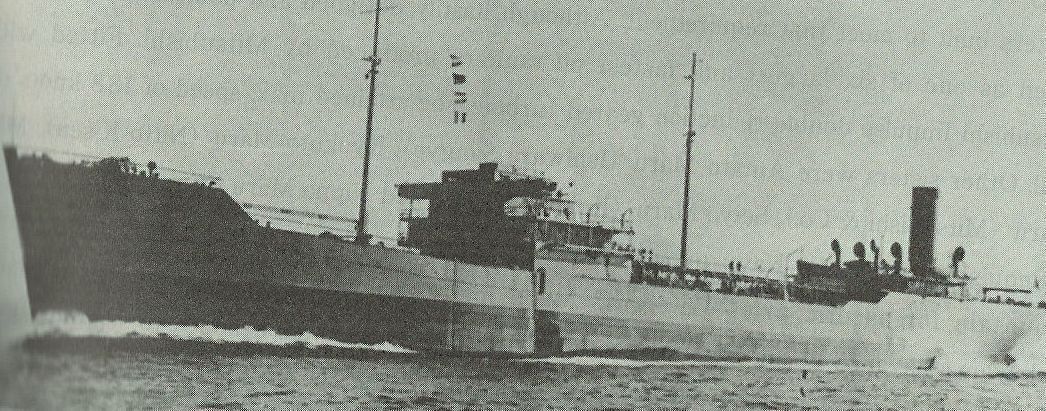YUSOSEN!
 (A wartime Standard Type 1TL tanker)
(A wartime Standard Type 1TL tanker)
ISSHIN MARU:
Tabular Record of Movement
© 2010-2021 Bob Hackett and Peter Cundall.
Revision 1
15 May 1943:
Aioi. Laid down at Harima Zosensho as a 10,044-ton Type 1TL wartime Standard Merchant Tanker for the Nippon Sekiyu (Oil Co.), K. K.
17 September 1943:
Launched and named ISSHIN MARU.
16 November 1943:
Completed and registered at Tokyo with Gross Registered Tonnage (GRT) and Net Registered Tonnage (NRT) of respectively 10,044-tons and 7,321-tons. Her Call sign is JUQS. [1]
4 December 1943:
Receives a Navy dispatch:
Transfer date is 4 December 1943.
Transfers from the Kure Naval District to the Osaka Guard District.
Requisitioned as a Navy transport ship.
8 December 1943:
Added to the Naval list.
28 December 1943:
Departs Kure
29 December 1943:
Arrives at Moji.
30 December 1943:
Departs Moji for Balikpapan, Borneo in an unknown convoy, probably HI-29.
31 December 1944:
Off Kyushu. At 2245, ISSHIN MARUís rudder malfunctions at 32-13N,129-50E. She will not answer the helm and cannot keep up with the convoy.
1 January 1944:
At 1223, rudder repairs are completed. ISSHIN MARU attempts to catch up with the convoy. At 1950 (I) LtCdr John A. Tyreeís USS FINBACK (SS-230) SJ radar makes first contact with a large target at 22,000 yards. When the range closes to 9,500 yards the target is identified as a tanker making 14 knots and zigzagging every 10 minutes.
2 January 1944:
East China Sea. 23 n. miles NW of Naze, Amami O-Shima, Ryukyus. At 0110, USS FINBACK starts her attack run on the surface. The target is unescorted. At 0154, Tyree fires three torpedoes and gets two hits that stop ISSHIN MARU. At 0204, ISSHIN MARU opens fire at USS FINBACK with her deck guns. Tyree takes USS FINBACK to periscope depth and at 0336, he fires fires three torpedoes from 1,300 yards. All hit.
At 0341, USS FINBACK is rocked by a terrific explosion. Shortly thereafter, ISSHIN MARU sinks at 28-36N, 129-03E. All 58 crew members are KIA.
- Bob Hackett and Peter Cundall.
Authorís Note:
[1] NRT is a ship's cargo volume capacity expressed in "register tons", one of which equals to a volume of 100 cubic feet (2.83 m3). It is calculated by subtracting non-revenue-earning spaces i.e. spaces not available for carrying cargo, for example engine rooms, fuel tanks and crew quarters, from the ship's gross register tonnage (GRT). Net register tonnage (NRT) is not a measure of the weight of the ship or its cargo, and should not be confused with terms such as deadweight tonnage or displacement.
Thanks go to Berend van der Wal of Netherlands and Gengoro S. Toda of Japan.
Back to the
Oilers Page





